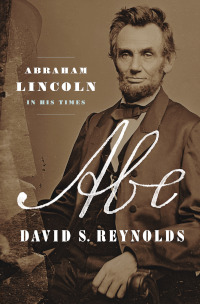Two Forthcoming Titles on Lincoln's Life and Times | History Reviews Spotlight
A fascinating and wonderfully readable portrayal of the tensions between fiery militancy and determined but measured devotion in working toward a goal; ambitious, comprehensive, and highly recommended for public and academic libraries
 Brands, H.W. The Zealot and the Emancipator: John Brown, Abraham Lincoln, and the Struggle for American Freedom. Doubleday. Oct. 2020. 464p. ISBN 9780385544009. $30. HIST
Brands, H.W. The Zealot and the Emancipator: John Brown, Abraham Lincoln, and the Struggle for American Freedom. Doubleday. Oct. 2020. 464p. ISBN 9780385544009. $30. HIST
Historian Brands (Univ. of Texas at Austin; Dreams of El Dorado) joins the stories of John Brown and Abraham Lincoln as they struggled with the intractable problem of slavery. Brands skillfully employs the men’s own dramatic words to draw readers into their lives and visions for the United States. In early chapters, Brown’s fiery spirit and militancy eclipsed Lincoln’s gradualism. They never met, but each served as a foil for the other, Lincoln wanting to avoid war on Brown’s terms, and Brown rejecting Lincoln’s political approach. Abolitionist Frederick Douglass, most significant of the author’s many well-drawn secondary figures, served as a bridge between the two men. Before the war, he assisted Brown in assembling his followers. Later, he became an informal antislavery adviser/critic to Lincoln during the Civil War. Brown’s execution in 1859 put Lincoln’s character and actions at the center of Brands’s account. Throughout, he focuses on how these men’s values and visions affected their actions. Brands largely avoids becoming bogged down on details of consequential events he describes. VERDICT A fascinating and wonderfully readable portrayal of the tensions between fiery militancy and determined but measured devotion in working toward a goal. Excellent for general readers, especially those with an interest in the Civil War.—Charles K. Piehl, Minnesota State Univ., Mankato
 Reynolds, David S. Abe: Abraham Lincoln in His Times. Penguin Pr. Sept. 2020. 1088p. ISBN 9781594206047. $45. BIOG
Reynolds, David S. Abe: Abraham Lincoln in His Times. Penguin Pr. Sept. 2020. 1088p. ISBN 9781594206047. $45. BIOG
In his latest work, Reynolds (Walt Whitman’s America) examines another giant of the 19th century: Abraham Lincoln (1809–65). While several biographies have been published about the 16th president, a full-scale cultural biography has not yet been written, an omission Reynolds addresses in this work. In doing so, he delves deep into the environment and culture of Lincoln’s time, including how he was shaped by his era, one of great flux in the United States, and not solely due to the north-south divide. Other contributing factors included a weak central government, strong assertions of individualism, extreme viewpoints, and mob violence. Against this backdrop, Lincoln was able to manifest humility, compassion, and responsiveness. In addition, Reynolds underscores his subject’s ability to navigate and even influence the culture of his times. For example, he knew the people of his era well and could relate to the common man as well as the intellectual. Lincoln also understood how to strike a balance during a time of division and he knew how to move cautiously. Overall, Reynolds succeeds in bringing Lincoln and his times to life and in revealing why, even today, he remains an endearing figure. VERDICT Ambitious, comprehensive, and highly recommended for public and academic libraries.—Dave Pugl, Ela Area P.L., Lake Zurich, IL
RELATED
ALREADY A SUBSCRIBER? LOG IN
We are currently offering this content for free. Sign up now to activate your personal profile, where you can save articles for future viewing









Add Comment :-
Comment Policy:
Comment should not be empty !!!